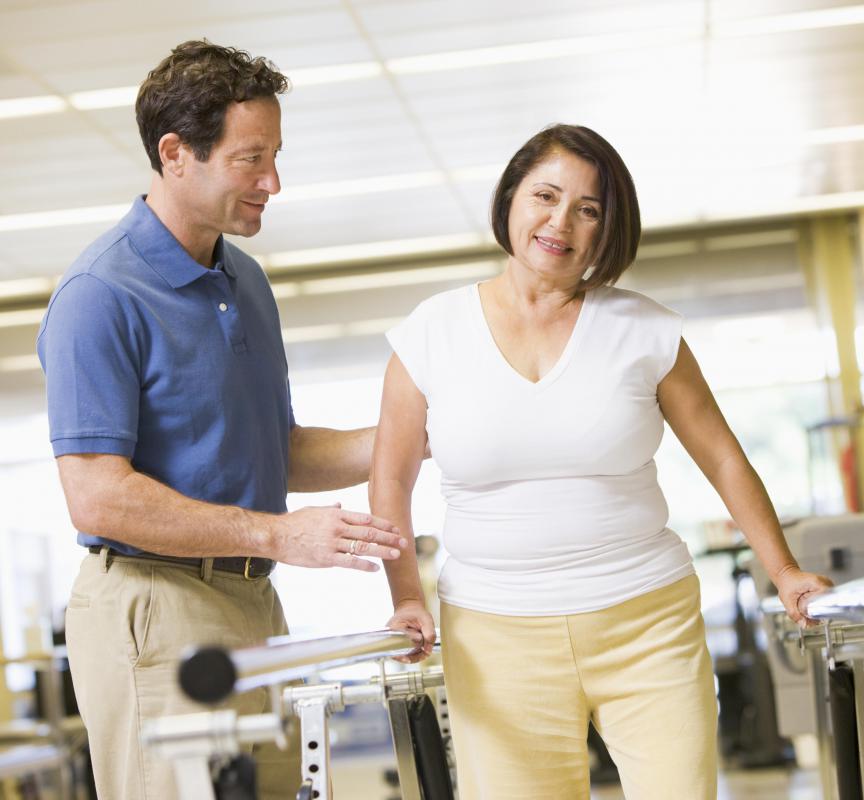At TheHealthBoard, we're committed to delivering accurate, trustworthy information. Our expert-authored content is rigorously fact-checked and sourced from credible authorities. Discover how we uphold the highest standards in providing you with reliable knowledge.
What Are Locomotor Skills?
Locomotor skills are skills relating to bodily movements that generate an overall movement of the body through space. Waving one's arms through the air is not an example of a locomotor skill — though motor skill is involved, no overall bodily movement is generated. Walking and jumping forward, on the other hand, are considered to be locomotor skills, as the body is moved through space. Learning locomotion skills such as walking, running, jumping, and skipping is an essential part of the normal development of many different animals, including humans. A locomotor disability is a type of physical or neurological problem that inhibits an individual's ability to propel himself through space.
Walking is widely considered to be one of the simplest locomotion skills and is a major milestone in the development of a child's motor skills. In spite of its apparent simplicity, walking is a complex act that is comprised of many different components. Balance, gait, stride length, and coordination with the arms and the rest of the body are all important aspects of walking. During early development, a child's gait tends to develop from an uneven, flat-footed progression to a more assured and balanced heel-to-toe walk. Other locomotor skills, such as running and jumping, go through a similarly complex pattern of development over time.

The actual development of the physical components of locomotor skills is only one aspect of their safe and effective implementation. An individual, upon learning to run, for instance, must also develop the skill and finesse necessary to avoid obstacles and to remain aware of his environment. At any given time, an individual must be aware of the possible barriers preventing safe implementation of his locomotion skills. There may also be social considerations to proper locomotor movement, such as maintaining an appropriate degree of space between oneself and others.

Though most primary locomotor abilities are obtained during the course of normal development and do not require much intentional correction or improvement, some people, through choice or necessity, work to improve such skills. Individuals who suffer from neurological or physical disabilities or who suffer injuries affecting locomotor function often need to undergo physical therapy in order to redevelop their locomotor skills. Others, particularly athletes, may work to refine their skills through deliberate practice or work with personal trainers. Runners, for instance, often learn to run incorrectly and can benefit substantially from consciously working to bring about even minor improvements to their gaits.
AS FEATURED ON:
AS FEATURED ON:












Discuss this Article
Post your comments